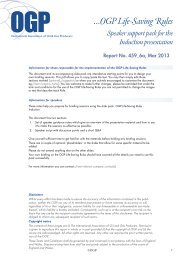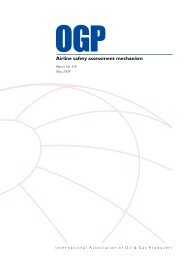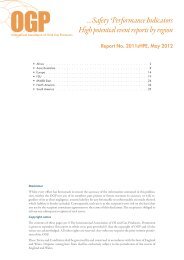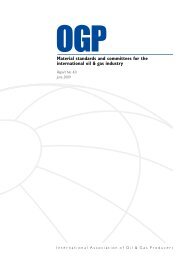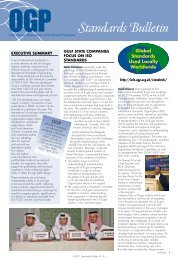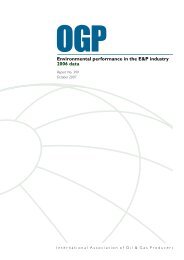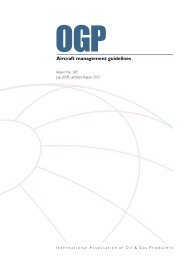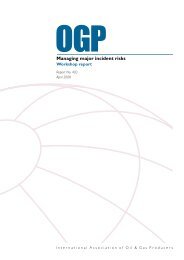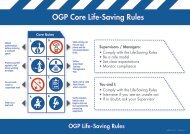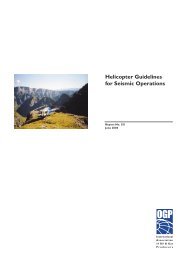Helicopter guidelines for land seismic & helirig operations - OGP
Helicopter guidelines for land seismic & helirig operations - OGP
Helicopter guidelines for land seismic & helirig operations - OGP
You also want an ePaper? Increase the reach of your titles
YUMPU automatically turns print PDFs into web optimized ePapers that Google loves.
<strong>Helicopter</strong> <strong>guidelines</strong> <strong>for</strong> <strong>land</strong> <strong>seismic</strong> & <strong>helirig</strong> <strong>operations</strong><br />
• Include a fatigue component in incident investigation procedures<br />
Programme development: company specific component<br />
• Build a programme outline that reflects the above initiatives that are within the control of<br />
the helicopter provider its clients and contractors.<br />
• Implement controls and counter measures to control identified fatigue risk factors that<br />
would be under the control of the <strong>Helicopter</strong> Provider, its clients and contractors.<br />
• Implement Fatigue Management Programme in consultation with the client Aviation<br />
Advisor and <strong>Helicopter</strong> Provider.<br />
• Evaluate Fatigue Management Programme<br />
• Plan should be routinely evaluated against current operational needs, personnel changes,<br />
environmental changes, or significant changes in normal <strong>operations</strong>.<br />
Fatigue management <strong>Helicopter</strong> Provider training programs should consider, but not be limited<br />
to, the following:<br />
• The risks associated with this particular <strong>for</strong>m of flying.<br />
• Pilot/Engineer work scheduling practices, including relief arrangements to cover absences.<br />
• Training specific to sleep and its effect on fatigue including nutrition, lifestyle choices, etc<br />
• On-the-job alertness strategies,<br />
• Rest environments provided by the employer (ie sleeping facilities).<br />
• Work environments, (environmental conditions hot and high, heat, or excessive cold and<br />
effects on per<strong>for</strong>mance in the cockpit or maintenance facility or lack there of).<br />
• Working under unusual, unpredictable or emergency operating conditions. Working outside<br />
of normal flight regimes, operational pressures ie weather, environmental constraints, client<br />
pressures etc.<br />
The FMP should include the above as minimum initiatives throughout the plan. It should<br />
combine and utilize appropriate scheduling of crews as well as implementation of fatigue<br />
reducing factors such as worksite climate controlled rest facilities, adequately equipped aircraft<br />
that enhance pilot com<strong>for</strong>t and reduce workload to mitigate the associated risks of fatigue.<br />
© <strong>OGP</strong><br />
73



